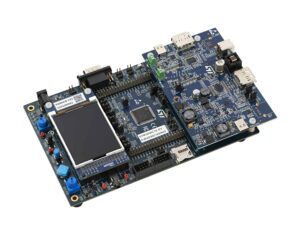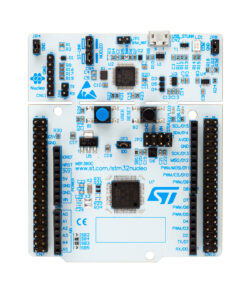Better understand what is at the heart of all STM32G0s, ST’s first 90 nm mainstream microcontrollers
To improve the accessibility of our content, please find the audio version of this blog post.
ST is launching today six new STM32G0s. The STM32G0C1, STM32G0B1, and STM32G0B0 are the first in the series to support two CAN-FD buses. They’re also the first to support USB-C Power Delivery (PD) as well as USB Full speed data transfer, and they’re inaugurating a new Flash capacity of up to 512 KB, from 128 KB for the previous STM32G0s. The new memory configuration also supports dual banks, meaning that it’s possible to write one bank while the other remains available for the application. The other new entries in the family are the STM32G061, STM32G051, and STM32G050. All three keep the Flash configurations of the STM32G041s and STM32G031s while increasing the RAM to 18 KB and while adding two 12-bit digital-to-analog converters and two analog comparators.
Next Steps
Experimenting with the new features is as simple as getting the STM32G0C1E-EV evaluation board or the NUCLEO-G0B1RE. The former will even allow developers to test ST’s crypto core. Both development boards can help take advantage of the CAN-FD controller, and the evaluation kit includes two USB-C ports. One USB-C port is Dual Role Power, meaning that it can switch from sink to source on the fly. The other supports Dual Role Data, meaning that it can either act as host or device.
Developers can also use ST software stacks to implement Power Delivery instructions and automatically switch from host to device modes. Finally, ST provides companion devices to protect the USB-C ports against ESDs. For example, the TCPP01-M12 for sink applications and the TCPP03-M20 for dual-role ports (DRP) guard against over-voltages while lowering the bill of materials. Let us, therefore, look at why we included new USB-C and CAN-FD controllers as well as new peripherals.
[pretty-callout align=”right”]
Fun Facts About the STM32G0
- Cortex-M0+ at 64 MHz
- All variants have 32-pins and 48-pins packages for easy swap
- Single supply pair on packages with 64 pins or fewer for more straightforward PCB design
- Less than 100 µA/MHz in normal mode
- Only 200 nA in STANDBY and 10 nA in low-power mode
[/pretty-callout]
STM32G0C1, STM32G0B1, and STM32G0B0, Why Add a USB-C Data Controller and CAN-FD?
USB-C PD and Data
All six new models increase the range of the STM32G0 family to create a wider opportunity umbrella. For instance, the previous STM32G0s had a dual-role USB-C PD controller but for power transfers only. Since the first models only run smaller IoT applications, transferring data is never a necessity. Today, the new STM32G0C1s, STM32G0B1s, and STM32G0B0s are offering a memory configuration that overlaps with the STM32G4. And since being able to run a more powerful application implies a more feature-rich product, it was natural to move to a USB data controller that can automatically switch between host and device modes for greater interoperability with the existing ecosystem of products. The STM32G0C1, STM32G0B1 are the only ones with a USB-C PD controller. As a member of the Value Line, the STM32G0B0 transports data but doesn’t offer USB-C.
CAN-FD

The STM32G0C1, STM32G0B1, and STM32G0B0 also overlap with the STM32G4s thanks to their CAN 2.0b/CAN-FD controllers supporting a baud rate of 10 Mbit/s. Hence, engineers that need to use CAN FD for their industrial applications no longer have to switch to a different MCU family. For instance, on-board diagnostic (OBD) tools for cars don’t need an automotive-grade MCU, but they need CAN-FD or CAN 2.0. In this use case, the new STM32G0s significantly improve the performance-per-price ratio to open manufacturers to new markets. This particular example also explains why ST included two CAN-FD controllers since OBD tools use them both simultaneously.
STM32G061, STM32G051, and STM32G050, Why Add ADCs and Comparators?

The STM32G061, STM32G051, and STM32G050 follow a similar strategy by widening the opportunity umbrella of the STM32G0s. Indeed, adding two DACs and two comparators opens the STM32G0 to a myriad of applications that process a lot of sensor data, such as image stabilizers. Previously, engineers had to move to a more powerful system to benefit from these features. However, many of these programs are not memory or computationally intensive, and the 64 MHz of the STM32G0s offers more than enough power. Moreover, the thin WLCSP package available for the STM32G0 is a great candidate for space-constraint products. However, the lack of DACs and comparators was limiting in some instances. With the new STM32G0s, engineers can now conceive more cost-effective systems without sacrificing performance or form factor.
- Learn more about the new STM32G0s
- Check out the STM32G0 Value Line
- Partake in the STM32G0 Online Training
- Watch the STM32G0 Workshop
